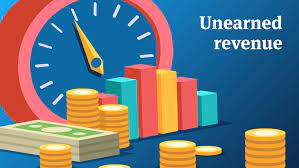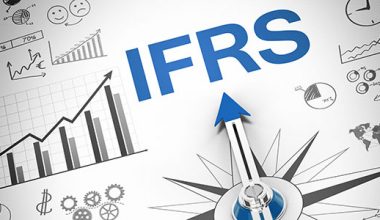Unearned service revenue refers to any business that accepts credit card or cash payments prior to delivering items and services to clients. It arises often in a number of businesses, and we will be looking into its examples, what unearned service revenue holds in a journal entry and accounting.
Unearned Service Revenue
Unearned service revenue is a financial accounting account. It’s classified as a liability, or an amount owed by a company. On a company’s balance sheet, it’s classified as a current liability, which is a standard financial report in accounting.
For example, when a customer pays for products or services before the business ships them or executes the service, the business receives unearned revenue. Prepaid revenue is another term for it.
The following are some examples of unearned revenue:
- Payment in advance for a service contract
- An advance payment on a retainer fee
- Advance payment on rent
- Advance payment in insurance.
Unearned Revenue In Books
Once a company sells a product or provides a service, money comes out of the “unearned revenue” account and put into the “revenue” account.
When unpaid revenue is on record as a property rather than a liability, the overall profit for this fiscal period will be in avoidance. In terms of profit, there will be a reduction in the accounting period in which you collect the income. Also, the accounting principle that income and expenses for the same project should be “in a match” can also be broken by not recording revenue obtained at the same time as expenses paid for the project.
Unearned revenue is on record as a liability on a company’s balance sheet. Since the money has not been spent yet and is owned by a client for goods or services, it is a liability. On the income statement, the prepaid service or product is treated as income as it is steadily supplied over time.
Unearned revenue should be on a report on a company’s balance sheet as a current liability. If you pay in advance for services or items that will be on delivery 12 months; or more after the payment date, this varies. In such circumstances, the unearned revenue will appear on the balance sheet as a long-term liability.
Unearned Revenue’s Importance
According to Accounting Tools, unearned revenue is beneficial to a small business’s profitability; because it provides the funds needed to pay for future project expenses.
Unearned Revenue vs Deferred Revenue
Unearned revenue and deferred revenue are terms that describe revenue that a company gets but has yet to earn. Prepaid revenue is also known as unearned revenue, and customers’ advances are referred to by these terms. Unearned revenue, on the other hand, is a liability because the company has yet to supply actual goods or services.
When Do You Keep Track of Unearned Income?
Prepaid revenue is recorded as a liability in your company’s balance sheet as immediately as it is received. As a result, under current liabilities, you will debit the cash entry and credit unearned revenue. Once you’ve delivered the goods or services, you’ll adjust the journal entry once you’ve received the funds. You will now deduct unearned revenue and credit earned revenue.
Receiving unearned revenue is accepting advance or pre-payments prior to the actual supply of things or services, leaving it a liability. However, when you supply the product or service, it gradually transforms into an asset. As a result, unless you plan to supply the products or services a year or more after obtaining the prepayment; you’ll record unearned income as a short-term liability on your balance sheet.
How Do You Account for Unearned Income?
When you receive unearned revenue, you should first document it on your company’s balance sheet before making the journal entry. Prepaid revenue will be deducted first from current obligations or the particular unearned revenue account type. Once you’ve recognized a portion or all of the prepaid revenue, you’ll need to make the necessary journal entries.
#1. On A Balance Statement, Look For Unearned Revenue.
Unearned revenue is reported on your company’s balance sheet, an essential financial summary that you can create with accounting software. It’s goes into the accounts as a short-term liability (or long-term liability where applicable). You will debit the cash entry and credit unearned revenue because it is a cash boost for your business.
The “assets” side of a balance sheet should always match the “equity plus liabilities” side. As a result, prepaid revenue is recorded as a reduction in unearned revenue (liability account) and an increase in revenue (asset account). It verifies that the computation is correct.
#2. Recording Unearned Revenue In The Ledger
Unearned revenue is first recorded in your books as a cash account debit and an unearned revenue account credit using the liability method. In double-entry accounting, the debit and credit are both the same total. You also keep track of each transaction in two different accounts. If the company receives the amount it owes on credits, that will be the first journal entry
#3. Making Corrections To Journal Entries
You will create an adjustment entry when the business has delivered the products or services that were paid for. The sum you identify will be debited from the unearned revenue account, and a matching amount will be credited to the product or service revenue account. As a result, you’ll record two journal entries for unearned revenue: one for collecting it and one for earning it.
How To Calculate Unearned Services Revenue
Divide the entire amount of cash you received from consumers by the number of months or period for which you pledged to offer services in order to compute your monthly unearned income. Let’s say you agreed to sweep a building for five months for $7,000. Your unearned monthly income will be:
$7,000 (total amount received) divided by 5(number of months) = $1,4000.
If you want, you can compute your unearned revenue quarterly by dividing the cash you received for the year’s supply of services by four. Assume your company got $20,000 from a customer as part of your annual plan.
Unearned revenue= $2000/4 = $5,000
Unearned Revenue Examples
This revenue can be a fun and productive way to finance growth efforts while also putting those ideas to the test. Advance rent payments, annual software licensing subscriptions, and prepayment insurance are all examples of unearned revenue. Let’s look at some examples related to the above-mentioned cases.
Example 1: Prepaid Cards And Subscriptions
You’re paying deposits if your company pays annual subscription fees to SaaS providers, has newspaper magazine subscriptions, or provides mass transit passes as an employee benefit. The vendor that collects these funds agrees to offer a service that you have already purchased for overtime. They’d credit the entire amount to unearned revenue, then credit the cash account incrementally each month. Making these fees ensures that a newspaper subscriber or a bus passenger will have access to these services, while the cash will allow the service provider and transit operator to sustain, grow, and enhance those services.
Example 2: Production Burden And Cash Flow
Unearned revenue can happen on a far greater scale than a monthly bus pass, for example. Enterprise clients will receive premium services as a result of the $5,000 advance payment you’ve requested. Those funds allow your company to employ and educate more employees, create and deploy a 24-hour customer service app, and secure special products from your supplier, all of which are essential components of offering premium service. It’s also possible that the upfront payment your company gets is paid to a supplier who demands a deposit for increased manufacturing of components you already use. Your unearned revenue helps a variety of other businesses develop. The new services would not be possible without the prepaid payments.
Unearned Service Revenue Journal Entry
Unearned revenue is first recorded as a debit to the cash credit entry to the unearned revenue account in the accounting system. The credit and debit are equal, as is customary in double-entry accounting. In addition, every payment is open in two accounts.
This journal entry of unearned service revenue represents the fact that the company has received an increase in money, but it was obtained on credit. It is a deposit for delivering products or services.
You need to make an adjustment entry once you deliver the goods or services. According to Accounting Coach, “the unearned revenue account will be debited and the service revenues account will be credited the same amount.”
Therefore, this implies that the journal entry of unearned service revenue is two ways, which are: when you receive it and when you earn it.
Unearned Income vs. Earned Income
If the company completes the service for which the customer paid, you make another journal entry to record the revenue. When a publishing company sends publications to a customer who has paid for a two-year membership, the journal entry indicates a credit to revenue and a debit to unearned service revenue. The corporation turns the unearned money into “real” or “earned” revenue.
What Is Unearned Service Revenue In Accounting
You can refer to unearned revenue as prepaid revenue in accounting. It is a payment advance to a company before it supplies goods or services to a customer. Unearned revenue is a payment or liability you owe a corporation. This is because, despite obtaining payment from a consumer, the corporation still owes money for the delivery of a product or service. The company will owe the money paid by the consumer if the company fails to deliver the promised product or service or if a client cancels the transaction. You make an adjustment entry when you deliver the products or services.
According to Accounting Coach, unearned revenue is beneficial to cash flow. Unearned revenue is a company’s financial accounting, which is also classified as short-term liabilities, or an amount owed by a company. On a company’s balance sheet, it’s classified as a current liability; which is a standard financial unearned service revenue statement in accounting.
As a result, revenue should always be in the record as a liability first. It’s worth noting that once the products or services are delivered, the revenue that was earlier recorded as a liability is now recorded as revenue (i.e. the unearned revenue is then earned).
Unearned Service Revenue On Financial Accounting Statements
Deferred revenue has varied effects on the income statement, balance sheet, and cash flow statement.
#1. The Financial Statement
Unearned revenue appears on the balance sheet in two areas.
First, when you get money from your customers, it is among your cash and cash equivalents, which is an asset. Unearned income, on the other hand, is noted as a liability because you have not yet earned the revenue and yet own the customer for your services. Unearned revenue is usually a current issue because most prepaid agreements are for less than a year.
#2. Profit And Loss Statement
The income statement does not include unearned revenue. However, as you complete each section of the deal, you will pay a portion of the unearned revenue account into the revenue account for each accounting session. Then, this money will be on record on the income statement.
#3. A Cash Flow Statement
The cash flow statement indicates how much money is coming in and going out of the company. Unearned revenue is cash credit, hence it appears as a real integer in the cash flow statement’s operating activities section. It doesn’t seem necessary if you haven’t earned the money; what matters is that it has arrived in your business.
Is Unearned Revenue A Liability?
Yes, unearned revenue is, indeed, a liability. Unearned revenue must be reported as a liability, according to financial reporting standards. A liability is a debt that your business owes. You could be questioning how revenue can become a liability if liability is something you owe. To comprehend this, you must first comprehend the meaning of the term “unearned.”
Unearned signifies that you have received money from a customer but still owe them money for your services. It is also represented as a liability until you “pay them back” in the form of the services owed, indicating that you have not yet given the services.
Is Service Revenue a Liability or Asset?
Yes, unearned revenue is, indeed, a liability. Unearned revenue must be reported as a liability, according to financial reporting standards… It is also represented as a liability until you “pay them back” in the form of the services owed, indicating that you have not yet given the services.
Is Unearned Service Revenue a Debit or Credit?
Unearned revenue is first recorded as a debit to the cash credit entry to the unearned revenue account in the accounting system. The credit and debit are equal, as is customary in double-entry accounting. In addition, every payment is analyzed in two accounts.
Where Is Service Revenue on a Balance Sheet?
Unearned revenue is recorded as a liability on a company’s balance sheet. Since the money has yet to be generated and it reflects products or services owing to a client, it is viewed as a liability. On the income statement, the prepaid service or product is treated as income as it is steadily supplied over time.
Is Service Revenue a Current Liability?
Yes, it is a current liability, because, on a company’s balance sheet, it’s classified as a current liability, which is a standard financial statement in accounting.
What Is the Difference between Unearned Revenue and Service Revenue?
Revenue from the completed business activity is recorded on the income statement as revenue. Unearned service revenue must be documented, but it is not reported on the income statement as revenue. Cash received for non-provided services is not considered actual revenue until the income is earned.
What Type of Account Is Service Revenue?
Service revenue is a revenue account that tracks the income earned by a company through the sale of goods and services to clients. It is included on the income statement with other forms of revenue and business expenses. The accrual foundation of accounting is used to record service revenue.
Related Articles
- How to Cash a Check: Simple Step by Step Guide
- ACCOUNTING PROCESS: Understanding the 8 Steps in the Accounting Cycle
- Balance Sheet vs. Income Statement: Examples, Differences & Relationship
- How To Add Money To Venmo: Best Easy Guide (Updated)
- BOOKKEEPING SERVICES FOR SMALL BUSINESS: Top Best for Small Business in 2023
- PRINCIPAL VS INTEREST: Why You Need To Know The Difference






